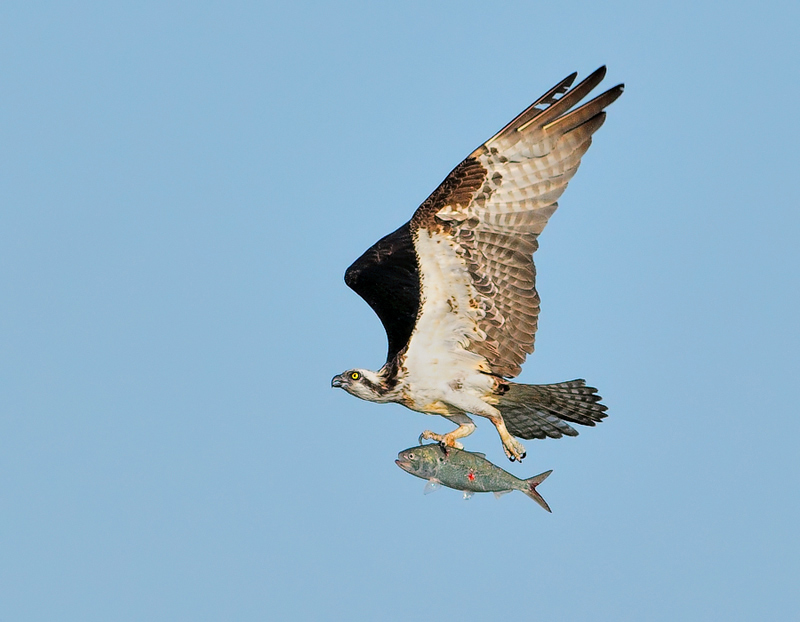CBF, Maryland Proposes Further Action for Menhaden in Chesapeake Bay
Today, the Atlantic States Marine Fisheries Commission (ASMFC) voted to establish a workgroup to consider additional protections from industrial fishing of menhaden in the Chesapeake Bay after hearing new survey results that show low osprey nesting success in the Bay.
The motion, offered by Chesapeake Bay Foundation (CBF) Maryland Executive Director Allison Colden, a member of Maryland’s ASMFC delegation, directs the workgroup to consider management actions, including seasonal closures, that would protect important fish and bird predators in Chesapeake Bay that rely on menhaden for food.
The motion was unanimously supported by the menhaden management board. This action demonstrates ASMFC’s recognition of the imminent need for additional precautions on the menhaden fishery. The workgroup is expected to present the results of their discussion to the Board at its October 2024 meeting.
Many refer to menhaden as “the most important fish in the sea.” These small, nutrient-packed fish serve as a vital food source for iconic Bay predators like osprey, striped bass, dolphins, and humpback whales. However, industrial fishing of menhaden in the Chesapeake Bay, one of the nation’s most important nursery areas, raises major concerns. While industrial menhaden fishing only occurs in Virginia waters, its impact can be felt across the Bay.
At Tuesday’s meeting, the Atlantic Menhaden Management Board was briefed by scientists with the U.S. Geological Survey (USGS) on the latest data for osprey abundance and nesting success in the Chesapeake Bay and along the Atlantic Coast. USGS researchers noted that the generally accepted reproductive rate for population maintenance is 1.15 young for each active nest. In 2021, the rate of osprey young per nest was 0.3, setting the Bay’s osprey population on a declining trajectory. This corroborates data from a 2023 study by the College of William & Mary’s Center for Conservation Biology, which revealed that osprey nests in Virginia’s lower Chesapeake Bay are failing at the highest rate ever recorded.
ASMFC’s current ecosystem model bases menhaden fishing limits on what's required to feed a healthy striped bass population. While osprey and other fish-eating birds are generally more sensitive to the abundance of menhaden, they are not explicitly considered in management of the menhaden fishery.
I predict another study, but no more action on limiting the Menhaden catch in the Bay.
Incidentally, we see a lot of juvenile Menhaden (so called peanut bunker) swimming in schools in shallow water at the beach, and the local Ospreys seem to have no problem finding them.

No comments:
Post a Comment